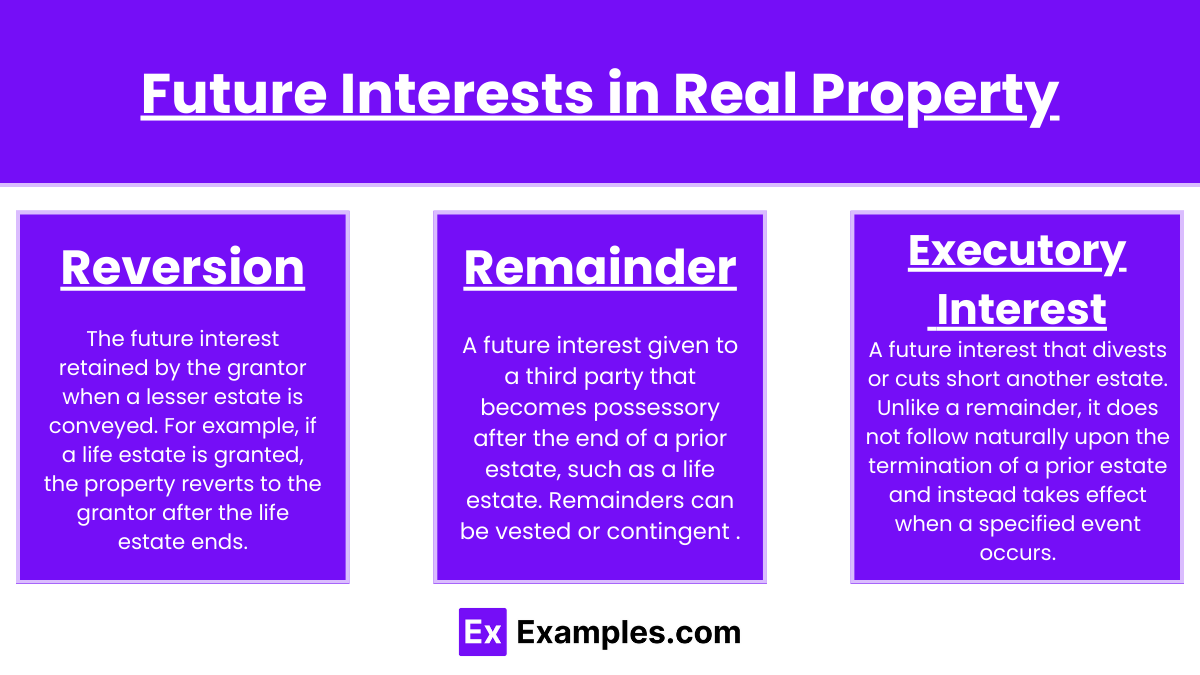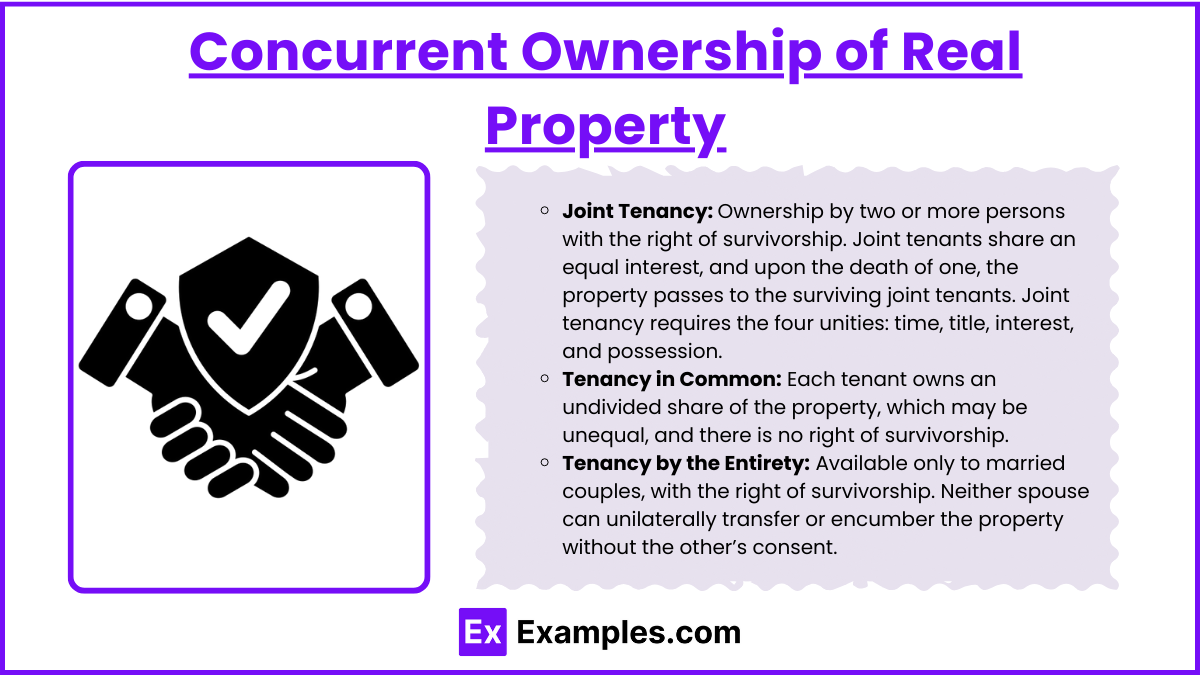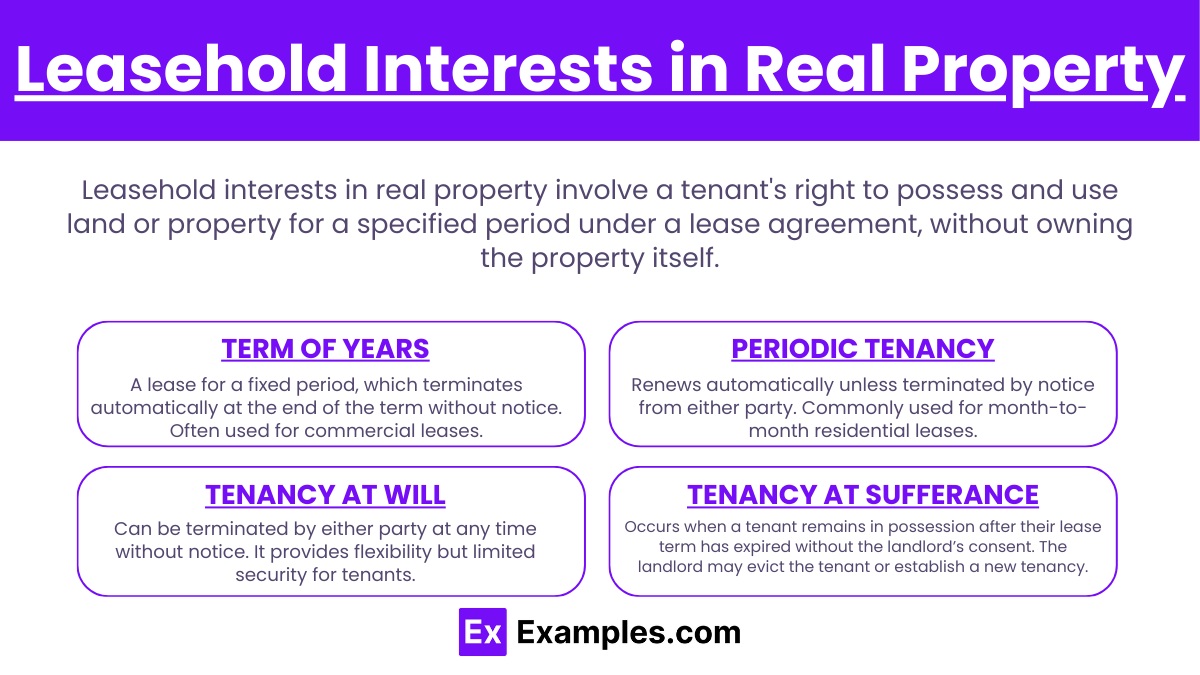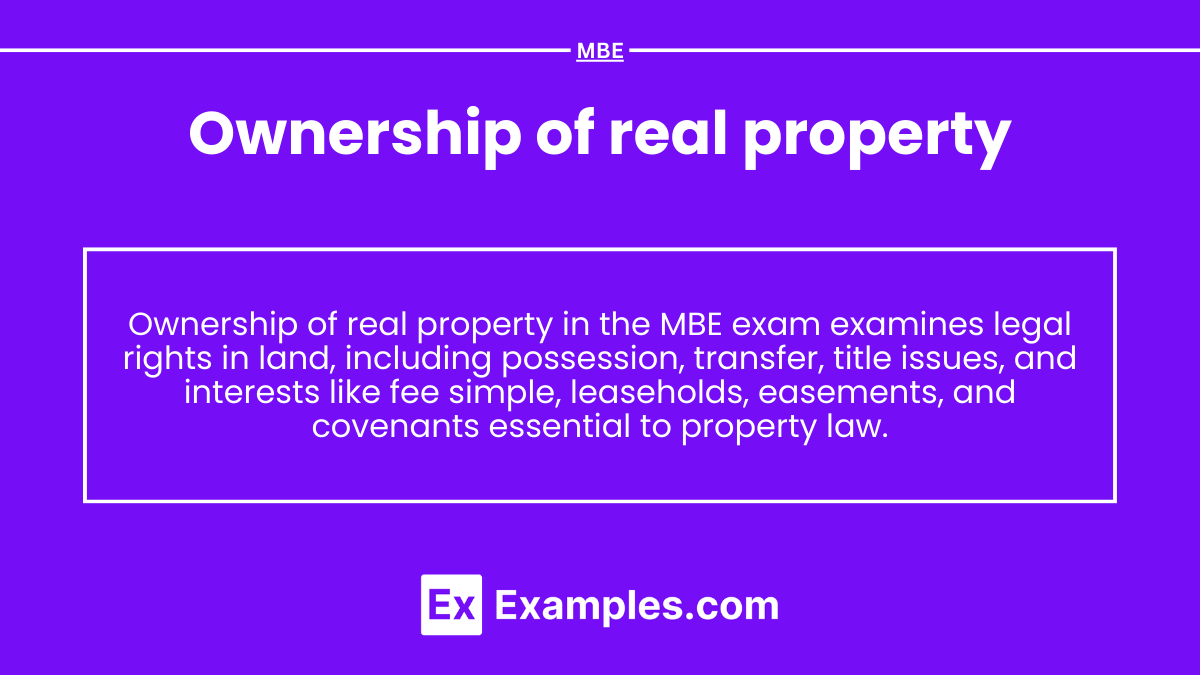In the MBE exam, mastering “Ownership of Real Property” is essential for understanding various property interests and rights. Key topics include types of estates, co-ownership structures, and rights of present and future interest holders. This knowledge forms a foundation for answering MBE property questions effectively and analyzing complex ownership issues.
Learning Objective
Study “Ownership of Real Property” for the MBE by understanding the types of estates and ownership interests, including fee simple, life estates, and leasehold interests. Learn the distinctions between joint tenancy, tenancy in common, and tenancy by the entirety, and analyze the rights and responsibilities associated with each. Explore the operation of future interests, such as remainders and executory interests, and examine their impact on transfers and inheritances. Apply this knowledge in practice questions to confidently assess ownership scenarios and navigate complex property rights on the MBE.
Types of Estates in Real Property

- Fee Simple Absolute
- The most complete ownership interest in real property, with an unlimited duration and full rights to use, transfer, or inherit the property. It’s often called “ownership in perpetuity.”
- Fee Simple Defeasible
- A fee simple that may end upon the occurrence of a specified event. There are two main types:
- Fee Simple Determinable: Automatically reverts to the grantor if a condition is violated.
- Fee Simple Subject to Condition Subsequent: Grantor has the right to reclaim the property if a condition is violated, but must take action to reclaim it.
- A fee simple that may end upon the occurrence of a specified event. There are two main types:
- Life Estate
- An interest in property limited to the duration of a person’s life (typically the life tenant’s). Upon the life tenant’s death, the property passes to a remainderman or reverts to the grantor.
Future Interests in Real Property

- Reversion
- The future interest retained by the grantor when a lesser estate is conveyed. For example, if a life estate is granted, the property reverts to the grantor after the life estate ends.
- Remainder
- A future interest given to a third party that becomes possessory after the end of a prior estate, such as a life estate. Remainders can be vested (certain to take effect) or contingent (dependent on a condition).
- Executory Interest
- A future interest that divests or cuts short another estate. Unlike a remainder, it does not follow naturally upon the termination of a prior estate and instead takes effect when a specified event occurs.
Concurrent Ownership of Real Property

- Joint Tenancy
- Ownership by two or more persons with the right of survivorship. Joint tenants share an equal interest, and upon the death of one, the property passes to the surviving joint tenants. Joint tenancy requires the four unities: time, title, interest, and possession.
- Tenancy in Common
- Each tenant owns an undivided share of the property, which may be unequal, and there is no right of survivorship. Each tenant can transfer their interest independently.
- Tenancy by the Entirety
- Available only to married couples, with the right of survivorship. Neither spouse can unilaterally transfer or encumber the property without the other’s consent.
Leasehold Interests in Real Property

- Term of Years
- A lease for a fixed period, which terminates automatically at the end of the term without notice. Often used for commercial leases.
- Periodic Tenancy
- Renews automatically unless terminated by notice from either party. Commonly used for month-to-month residential leases.
- Tenancy at Will
- Can be terminated by either party at any time without notice. It provides flexibility but limited security for tenants.
- Tenancy at Sufferance
- Occurs when a tenant remains in possession after their lease term has expired without the landlord’s consent. The landlord may evict the tenant or establish a new tenancy.
Rights and Duties of Co-Owners

- Right to Possession
- Each co-owner has an equal right to possess the whole property, regardless of ownership share.
- Duty of Contribution
- Co-owners must share costs for necessary repairs and taxes. However, improvements are typically not subject to contribution unless agreed upon.
- Partition Action
- If co-owners cannot agree on property use or sale, they may seek a partition, either physically dividing the property (partition in kind) or selling it and dividing proceeds (partition by sale).
Examples
Example 1
Two siblings inherit a house as tenants in common. Each can transfer their share independently, but both have an equal right to possess the entire property.
Example 2
A life tenant has the right to use the property for life. Upon their death, ownership passes to the named remainderman.
Example 3
A couple owns property as tenants by the entirety. One spouse cannot unilaterally sell or mortgage the property without the other’s consent.
Example 4
A property owner transfers land with the condition that it reverts to them if not used as a park, creating a fee simple determinable interest.
Example 5
A tenant overstays their lease without the landlord’s permission, creating a tenancy at sufferance until the landlord takes action.
Practice Questions
Question 1
A person owns property with “full rights in perpetuity” to use and transfer it. What type of estate do they hold?
(A) Life estate
(B) Fee simple absolute
(C) Tenancy in common
(D) Fee simple determinable
Answer
(B) Fee simple absolute.
Explanation
Fee simple absolute is the most complete form of ownership, granting perpetual rights to the property holder without conditions.
Question 2
A joint tenant wishes to sell their interest in a property. What effect does this have on the joint tenancy?
(A) It terminates the joint tenancy for all parties.
(B) It has no effect; joint tenancy remains.
(C) It severs the joint tenancy for that interest only.
(D) It converts the entire ownership into tenancy in common.
Answer
(C) It severs the joint tenancy for that interest only.
Explanation
When a joint tenant transfers their interest, it severs the joint tenancy for that interest, converting it to a tenancy in common while the others remain joint tenants.
Question 3
Two co-owners of a property cannot agree on its use and decide to go to court. The court orders a sale of the property with proceeds divided. What type of action is this?
(A) Partition in kind
(B) Adverse possession
(C) Partition by sale
(D) Leasehold conversion
Answer
(C) Partition by sale.
Explanation
Partition by sale is when the property is sold, and the proceeds are divided among co-owners. It’s a common solution when physical division (partition in kind) isn’t feasible.


